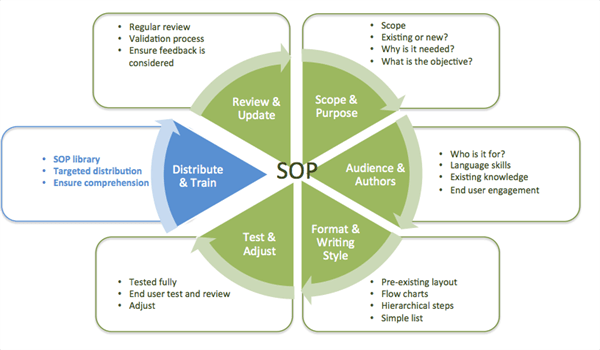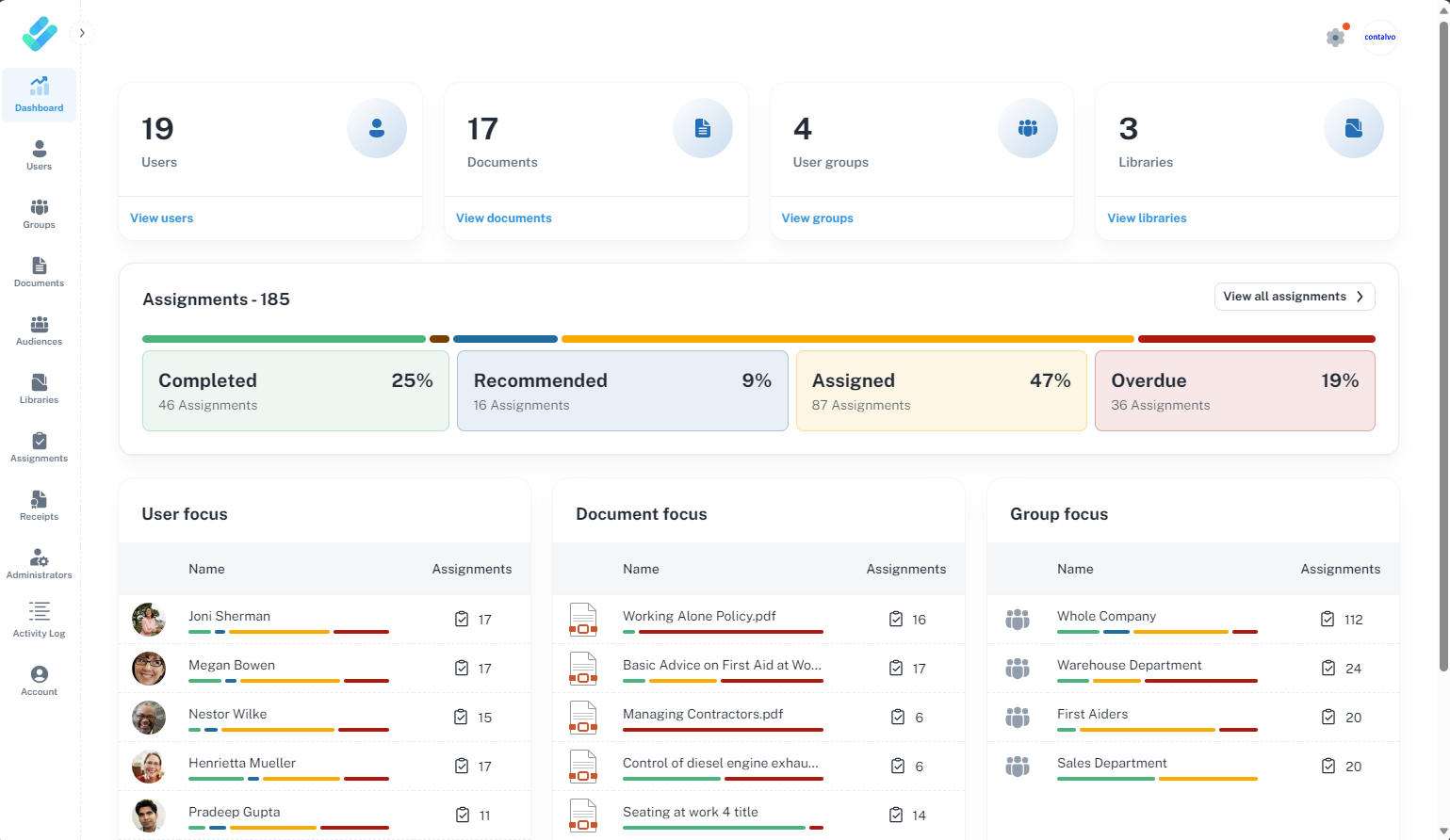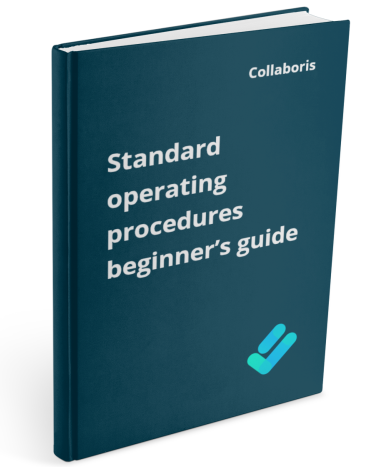Policy Approval Workflow Automated policy approval workflows offer several benefits that can significantly enhance ...
Standard Operating Procedures Guide – Distribute & Train
Welcome back to the 6th in our series of blogs describing the Key elements in the SOP lifecycle. So far we have introduced the ‘SOP pie’ and worked through all the way to having our SOP ready and tested in order to start the roll out. This blog will look at how you get the SOP out there and read by the relevant audiences– Distribute & Train

So your ultimate aim here is to ensure that your staff read the SOP, understand it and can adhere to it in their day to day roles. You may also need to include some SOPS training in this process. I would recommend SharePoint used in conjunction with the DocRead and DocSurvey tools as the perfect solution for this activity. The following points describe the main considerations and how those tools can help with each:
Tired of reminding staff to read your company policies?
DocRead can help
SOP Library
There needs to be a SOP Library in your organisation. Documents have to be stored in an easy accessible known area, where they can be referred to again and again. SharePoint is a great choice for this function, it has rich functionality that can help you achieve SOP adherence and compliance. Take a look at this blog - 5 Reasons to use SharePoint for SOP management
Distribution
It is no good having the document sat in the Library if we don’t have a means of telling people it is there and ensuring it has been read. We need to be able to distribute, and alert staff to any new, or changed SOP’s. Using a tool like DocRead to achieve this allows you to distribute your new or updated SOP to any group of employees and then gain a positive confirmation that they have read it.
Training
What is SOPs training? Ensuring your staff have read the SOP, if written in the correct way with an easily digestible format, can be all the training you need. However, this needs to be assessed on a per SOP basis. Don’t assume that one training method will fit all SOPs or all Employees. A low cost but more engaging SOPS training solution would be to send out a training video. Using DocRead functionality this can be done in the same way as sending out a document. It also provides the benefit of getting a positive confirmation that the Video has been watched or Document has been read. In turn, saving a lot of chasing time by allowing you to easily view who has and hasn’t done what you have asked.
Evidence and Tracking
From the simplistic view of wanting to know that all your staff have done all the above steps, through to needing to provide evidence to customers or regulatory body. Whatever your reasons, you will need some form of Management Information reporting on these final stages of getting your SOP read and understood. When done manually using emails and list this can take hours and be very unproductive. The recommendation is to ensure the solution you use can automate this and provide the MI (Management Information) to back it up. Whilst the workflows in DocRead take care of ensuring your staff have read and understood the content. The DocRead compliance cockpit gives you the tools in an easy to use interface that allows you to track that activity and provide the evidence where required.
So now we should be fully armed to get our SOP produced, out there and understood by its audience in order to give us the SOP adherence we are aiming for. So is that it?....No it isn’t!!
Next time we will talk about keeping your SOP current and relevant in our final slice of the ‘SOP pie’ – Review & Update
Get your free Standard Operating Procedures guide
Creating Standard Operating Procedures for your organisation doesn't have to be complicated. This guide will introduce you to the whole lifecycle from creation to training and distribution.
Other articles in the series:
You may also like:
Creating policy review reminders in Office 365 You might want to set up a ...
Podcast: Implementing effective healthcare procedures Implementing effective healthcare procedures is an ongoing process. It ...
Podcast: 10 Powerful Strategies for Employee ComplianceOrganizations face challenges in ensuring employee compliance with ...
AI Warns About Itself: How I Asked AI to Create a Podcast on the ...
Benefits of writing SOP's In any organization, standard operating procedures (SOPs) are critical to ...


